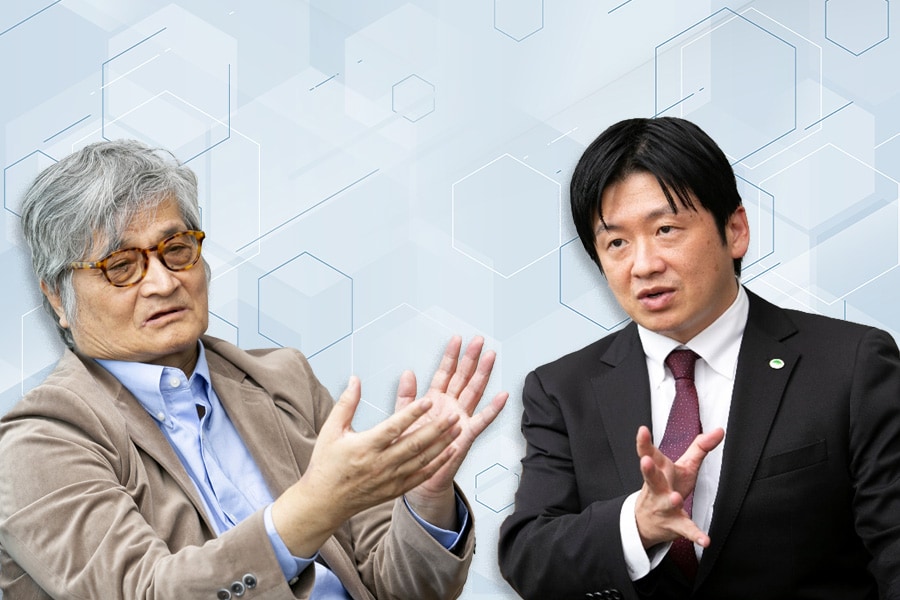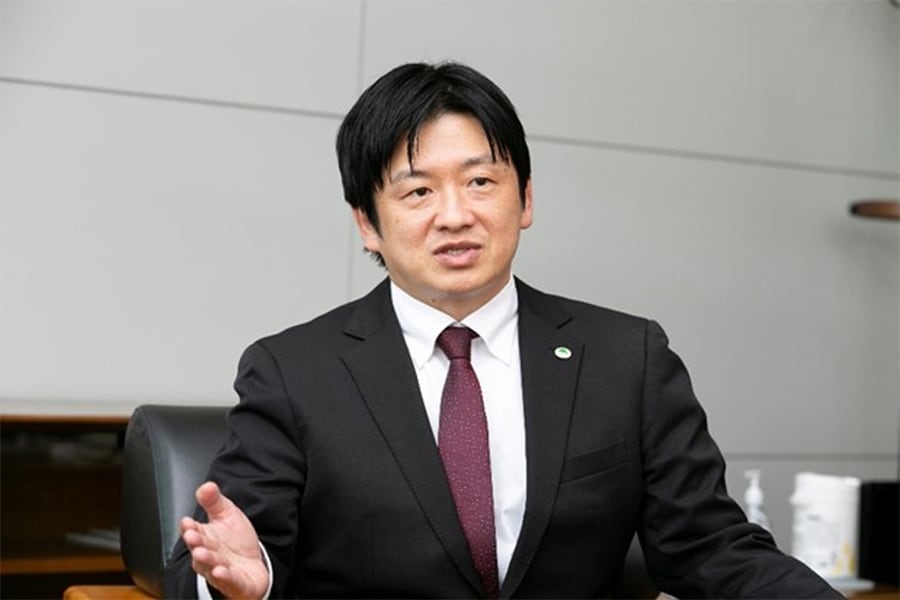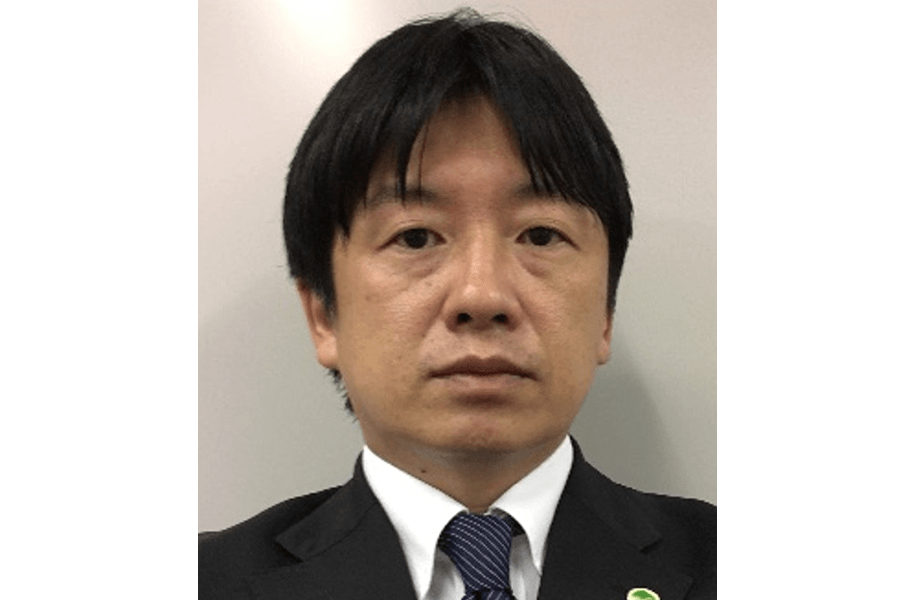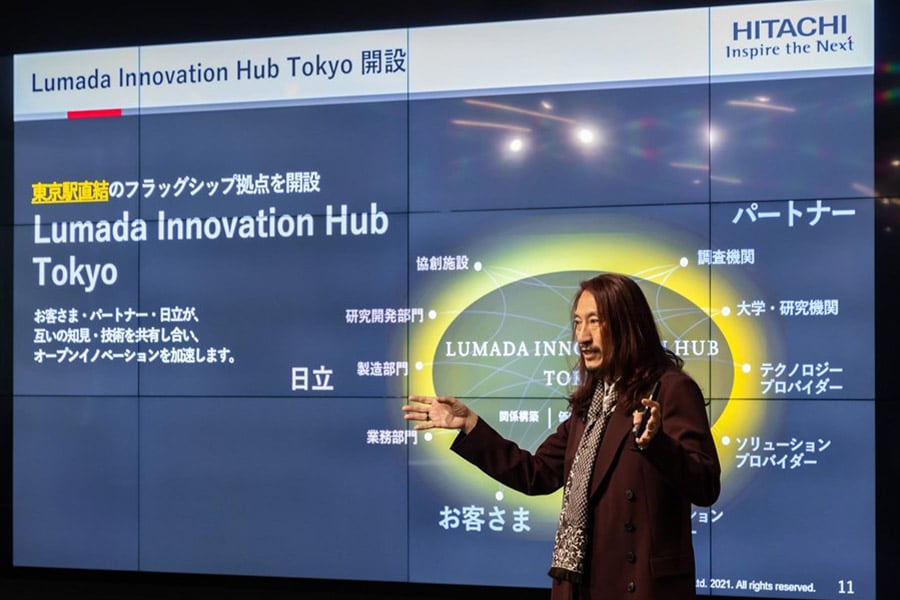Graduated from Kyoto University. Obtained an MBA from Keio Business School. Worked at a steel manufacturer and at Bunkyo University before assuming his current position. Has served as president of the Japan Society for Management Information, vice president of the International Academy of CIO Japan and the editor-in-chief of its journal, advisor to CRM Association Japan, visiting researcher at the University of Hull in the U.K., and visiting researcher at the University of California, Berkeley in the U.S. Has about 10 years of work experience, including a corporate planning position at a manufacturer. Has received the JASMIN Distinguished Paper Award from the Japan Society for Management Information Science, three times.
Barriers to DX and Their Solutions Lumada: Illuminating a Future of Collaborative Creation (Part 1)

Companies are exploiting digital technologies to transform their businesses and provide new services and value. Digital transformation (DX) is attracting attention in a number of different business sectors both in Japan and abroad. The rising prevalence of remote work and contactless communication using IT in response to the COVID-19 pandemic is driving the importance of DX.
However, turning DX into something meaningful is no easy task. A number of barriers must be overcome, including the identification of objectives, investment costs and human resources, and the building of systems to support digital innovation. Hitachi, Ltd. offers Lumada as a solution for overcoming these challenges. Professor Tatsuyuki Negoro of Waseda Business School and Junichiro Takagi of Hitachi, Ltd., who is involved in Lumada operation (at the time of interview), discussed Lumada’s features and how to use it.
Why are so many companies not implementing DX?
Takagi: Although expectations toward DX are rising, the number of companies producing results is still small. The DX Report 2 (Interim Report) published by the Ministry of Trade, Economy and Industry in 2020 revealed that over 90% of companies are either not implementing DX or are making only sporadic efforts at implementation. How do you see this situation, Professor Negoro?
Negoro: I feel that most companies lack a clear vision. Unless they establish purposes and goals regarding why they should implement DX and the kinds of challenges they have and what they want to change and how to change it, of course it is not going to function properly.
I also think there are issues in the process up to the actual realization of DX. During the huge amounts of time spent on system development, the market goes on changing. The more time spent, the less certain the return on investment. This makes it difficult to judge the cost and number of people to appropriate to the task. As a result, there are many cases of projects dead-ending at the proof of concept (PoC) phase.
The question is how to find an approach that maximizes the efficiency of repeated trial and error until you arrive at digital innovation. Almost all industries, especially existing companies, are under pressure to come up with a new response.
Takagi: I agree. To address such company challenges as these, Hitachi has, since 2016, been providing Lumada, which incorporates solutions, services, and technologies for helping customers succeed at digital innovation and DX.
Negoro: I, too, have seen articles and use cases about Lumada in magazines and on the web, but my understanding of it does not go particularly deep. Could you go over again what Lumada is and give a general overview?
Takagi: Lumada is an initiative for accelerating digital innovation that is being promoted by the entire Hitachi Group. It combines the words "illuminate" and "data" to mean "illuminating customer data and transforming it into value."
Our aim is to achieve DX implementation by bringing together Hitachi and customer knowledge and data, identifying potential customer issues, and then rapidly creating solutions to these issues along with bringing new value. Cooperation with external partners is also an important point in the creation of value from data possessed by customers and the acceleration of digital innovation.
Points in leveraging Lumada for success in DX

Negoro: By this, you mean that accelerating market changes and diversifying customer needs are giving importance to cooperation among companies working toward DX, Hitachi (which provides support for DX implementation), and partner companies that support the provision of solutions. Could you elaborate on important points in how these three parties can produce success in DX?
Takagi: The first point involves collaborative cooperation with customers and partner companies. In cooperation with various partners, we quickly and efficiently carry out open innovation aimed at digitally transforming a customer's business, operations, products, and services.
The second involves use cases that accelerate collaborative creation. The Hitachi Group has so far accumulated over 1,000 use cases of collaborative cooperation with a broad range of customers. Use cases comprise the accumulation of past cases regarding what customer issues needed solving, what kind of value was created from the data, and what kind of technology was applied achieving solutions to problems.
In addition, in April 2019 we began providing Lumada Solution Hub as a platform for accumulating such use cases in reusable form. This lets us speedily provide proven solutions to customers in a variety of sectors.
The third is platform products and technology. Hitachi has an extensive range of platforms, technologies, and digital products for supporting collaborative creation aimed at DX. Working together with Hitachi research labs, university research facilities, startups, and other organizations to develop and provide these leading technologies is also an indispensable element of Lumada.
Adding partner company solutions and knowledge to DX solutions

Negoro: Is my understanding correct in that, while use cases generally go no farther than cases that have been tailored especially for their industry or sector, Lumada instead provides them in a form that can be reused by different companies?
Takagi: Yes, it is. Lumada Solution Hub allows for the flexible combination and use of the solutions and knowledge of both the Hitachi Group and partner companies. When considering ways to solve issues with customers, we search Lumada use cases for potentially useful solutions and conduct the PoC in the cloud that the customer desires, and then we add parts and components that are lacking, customize, and finally transition it all directly as-is to operation in the actual environment.The use cases that have been accumulated contain proven solutions that are in a combinable form. This makes it possible to speedily effect a digital shift by matching and connecting them to the customer's issues.
Negoro: I believe that taking the more-worldly view in which the solutions and products of other companies are also brought in is important to achieving success. For example, when gathering and analyzing data from a manufacturing site, it is necessary to gather and organize data from the equipment of different vendors and create a single analysis logic. Such needs will, in particular, increase in operations that connect the value chain of the manufacturing industry to attain general optimization.
Takagi: Correct. In November of last year, we started the Lumada Alliance Program in order to carry out mutual cooperation with a variety of partners from other industries. This program lets us bring together the DX expertise and technologies of not only Hitachi but also of other companies.
For example, with respect to the optimization of the manufacturing industry value chain as a whole, we have already begun to link up solutions from Microsoft and PTC. In the future, we will deploy a business model in which we work together under the Lumada Alliance Program with even more partners to create new value and innovation.
A platform that has both individuality and commonality
Negoro: I think that customers see Lumada is a platform for rapidly developing digital solutions that use IoT and AI. But when you say "platform," you need to consider that there are two major types.
One is a general-purpose platform, such as Google, AWS, and Azure. With these, customer data is uploaded to the cloud where image recognition and text mining are conducted and their results returned. Whatever type of data is used, these have a general applicability that allows systems to be created that can basically correctly return forecasting and analysis results.
The other, Lumada, is what I would call an industry-specialized type of platform that is matched to the operational objectives of individual industries. For example, the failure forecasting systems used for facility maintenance by electric power companies cannot be used without modifications for railway company facility maintenance. It therefore used to be necessary to create them individually for each industry.
With Lumada, however, solutions and components can be reused and customized for other industries. It also has the platform advantage of allowing the integration of various types of data. Together, these let Lumada combine both individuality and commonality. This in turn allows a solution for the electric power business to be applied to the railway business.
In the world of general-purpose platforms, it is easy for certain companies to gain a large market share worldwide, but for something like Lumada, which has both individuality and commonality, it is not so easy to generalize its application like this. I think this gives it an extremely big advantage in global competitiveness.
Takagi: To accelerate digital innovation, I had been thinking that it was necessary to provide proven solutions and components in a form that could to some extent be shared and to have a platform that can provide everything from issues analysis to PoC, configuration, delivery, and operation. Especially now, as business reform speeds up in response to the COVID-19 pandemic, it is clear that Lumada is aimed in the right direction.
Tatsuyuki Negoro Professor at Waseda Business School

Junichiro Takagi General manager of the Application Cloud Service Business Division*, Hitachi, Ltd.
Joined Hitachi, Ltd. in 1998. Since joining, has consistently worked in the IT software field, developing middleware products for enterprises, embedded software, and various cloud services both in Japan and overseas. Since the launch of Lumada in 2016, has been involved in the business operation of various Lumada solutions that accelerate customer DX on the cloud and of the service platforms that serve as their foundation. From April 2021, will be in charge of various energy system businesses for electric power companies via the Social Infrastructure Information Systems Division.
-
*At the time of interview




